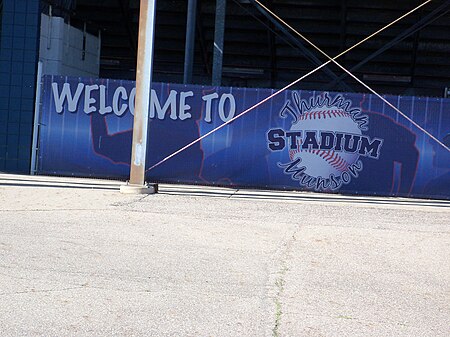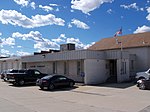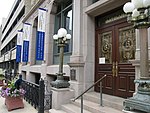Thurman Munson Memorial Stadium

Thurman Munson Memorial Stadium is a stadium in Canton, Ohio, USA, primarily used for baseball. The facility is named after former Major League Baseball player Thurman Munson, who grew up in Canton. Munson was a New York Yankees catcher who was killed when his private plane was attempting to land at Akron-Canton Regional Airport in Summit County on August 2, 1979. Munson's number 15 is displayed on the center field wall. The ballpark has a capacity of 5,700 people (as of 1996) and opened in 1989. It is constructed almost entirely of aluminum. It is the former home of the Canton–Akron Indians, the Double-A minor league affiliate of the Cleveland Indians, which played at the ballpark from 1989 to 1996. The team was renamed the Akron Aeros and moved into their new ballpark in downtown Akron in 1997. When they moved out, the ballpark became the home of the Canton Crocodiles, a team of the independent Frontier League, through 2001. In 2002, the Crocodiles left the stadium and it became the home ballpark of the Canton Coyotes, also of the Frontier League. After one season in Canton, the Coyotes moved to Columbia, Missouri and changed its name to the Mid-Missouri Mavericks. The stadium currently serves as home for the Ohio Men's Senior Baseball League and also hosts high school games and tournaments throughout the season. The stadium is currently leased and managed by the Ohio Men's Senior Baseball League, an amateur adult baseball league whose offices are housed in the stadium. Since the Canton McKinley boys baseball team moved from Don Scott Field to Thurman Munson Stadium Canton City Schools have done significant upgrades and signed a 25 year lease with the city of Canton
Excerpt from the Wikipedia article Thurman Munson Memorial Stadium (License: CC BY-SA 3.0, Authors, Images).Thurman Munson Memorial Stadium
Park Access, Canton
Geographical coordinates (GPS) Address Nearby Places Show on map
Geographical coordinates (GPS)
| Latitude | Longitude |
|---|---|
| N 40.771653 ° | E -81.382819 ° |
Address
Park Access
Park Access
44707 Canton
Ohio, United States
Open on Google Maps










